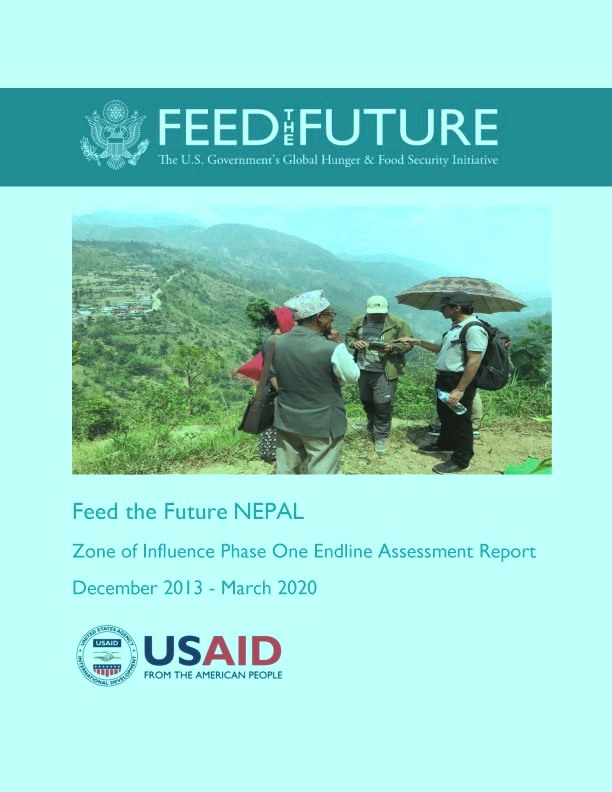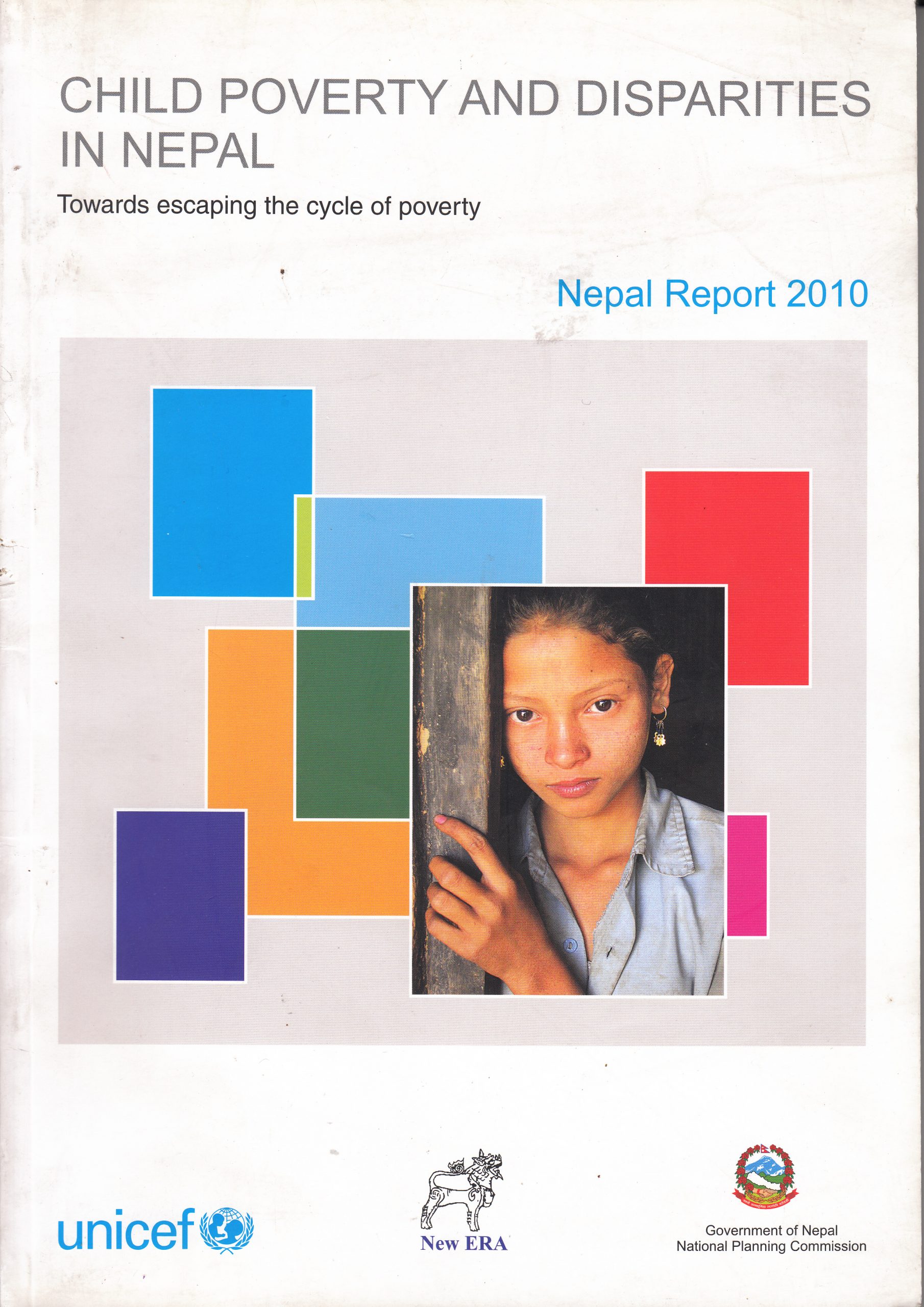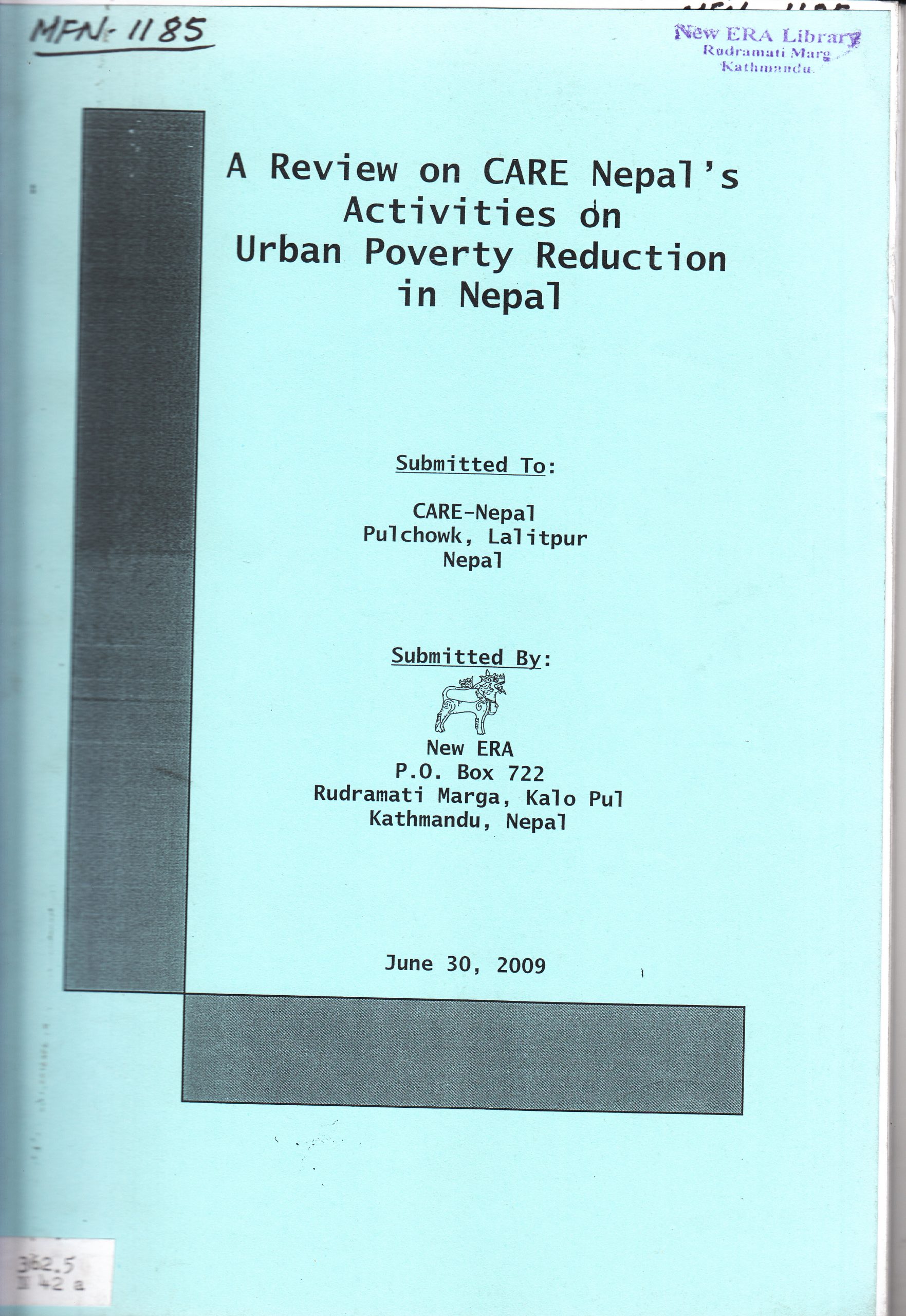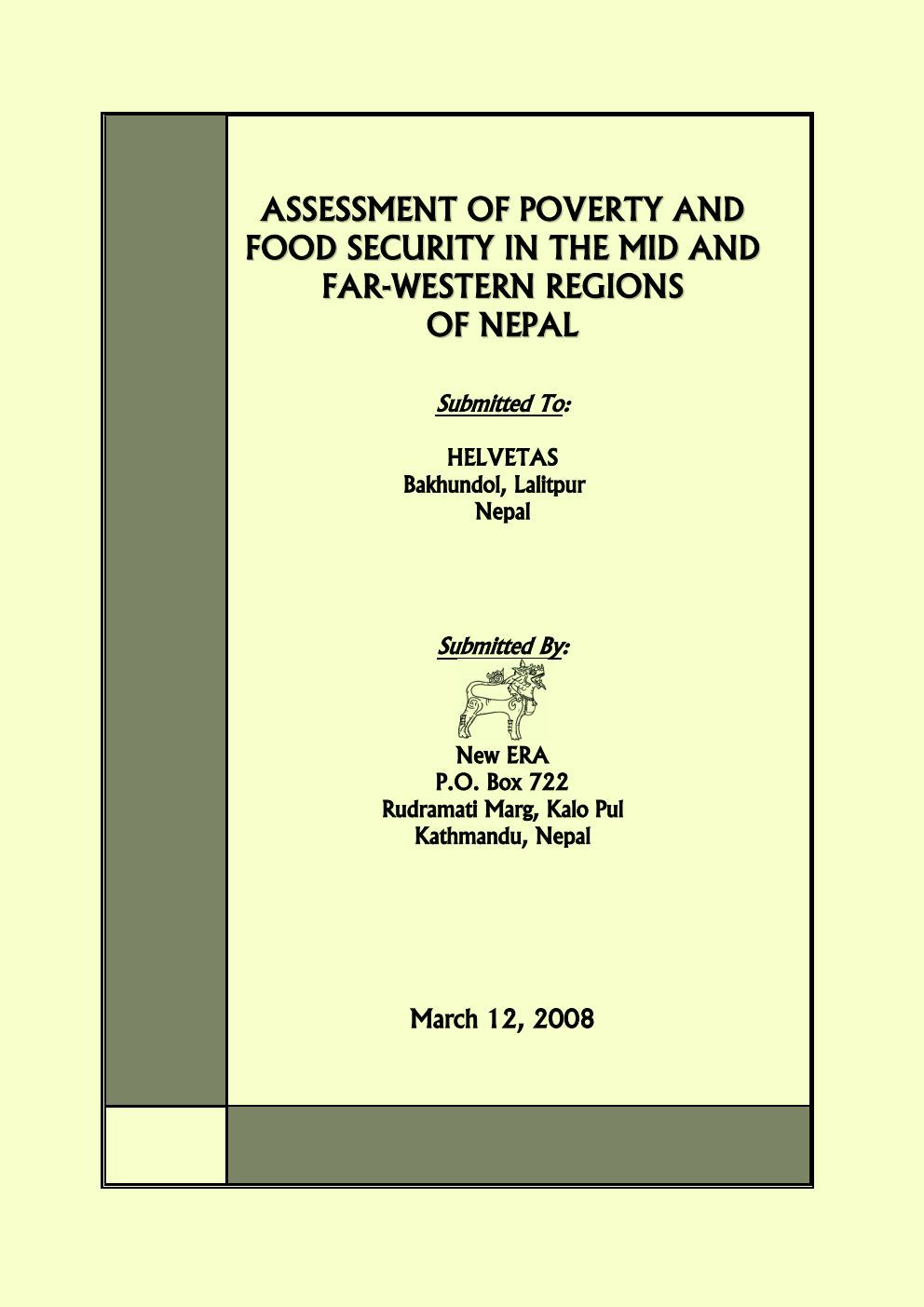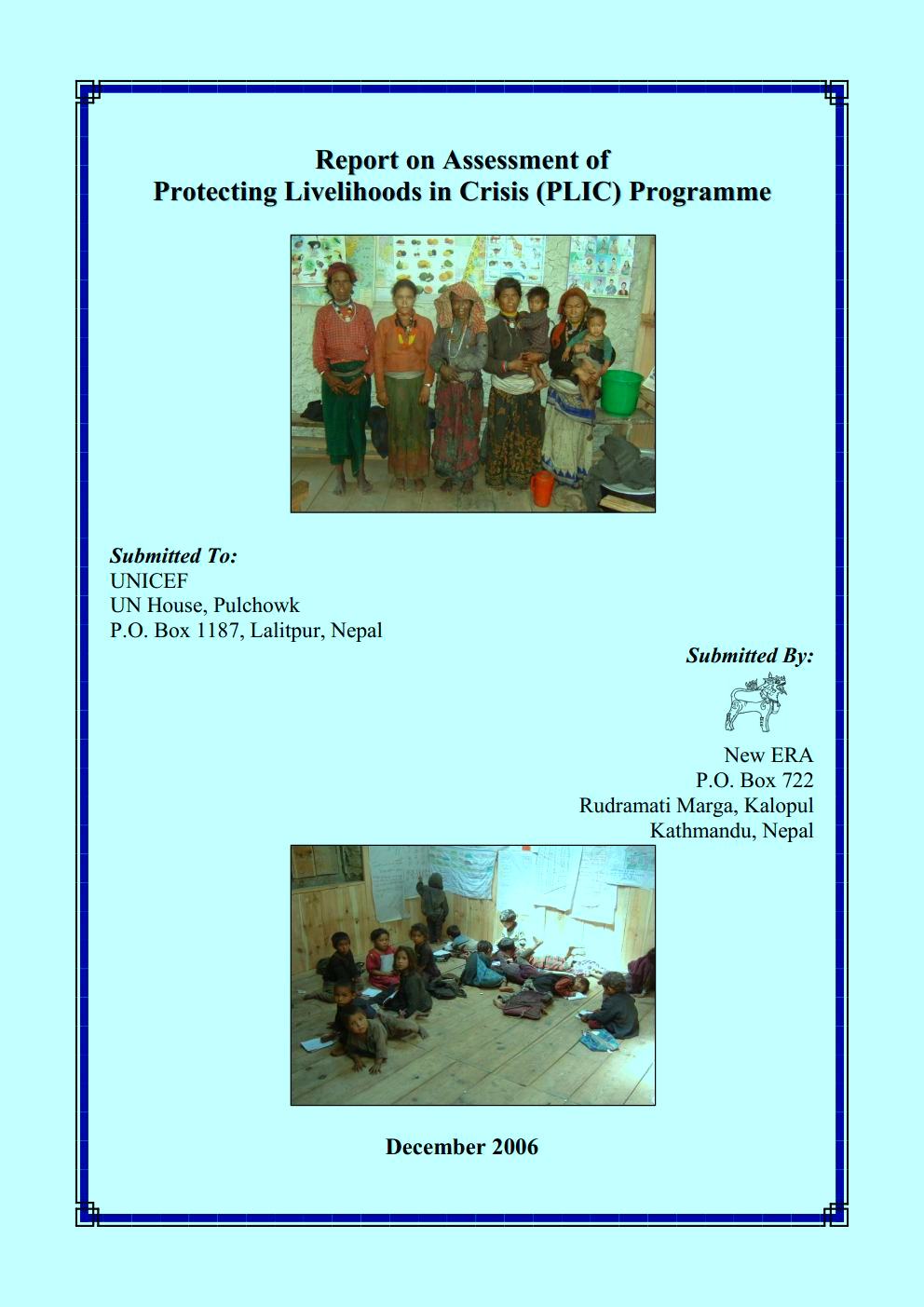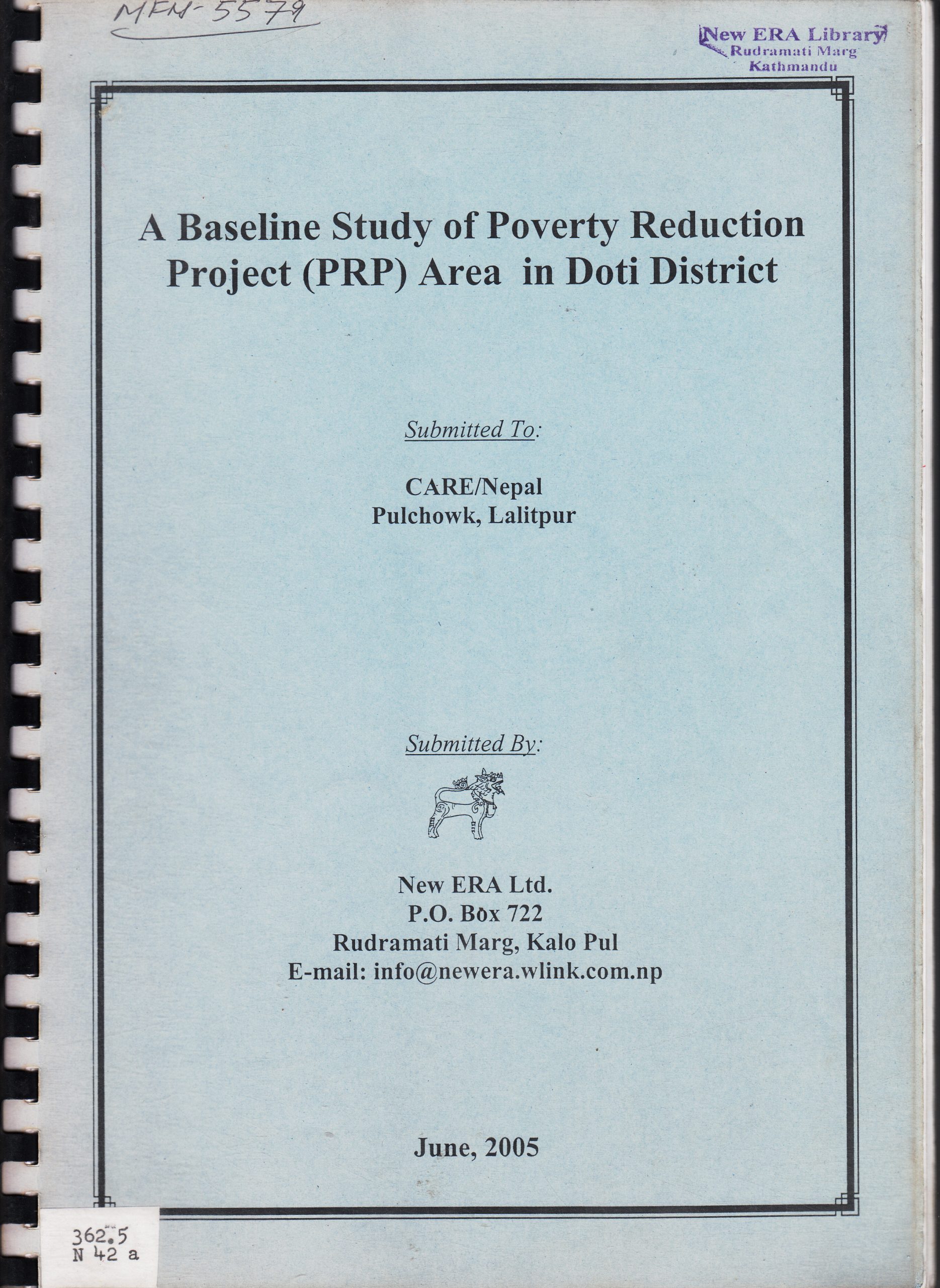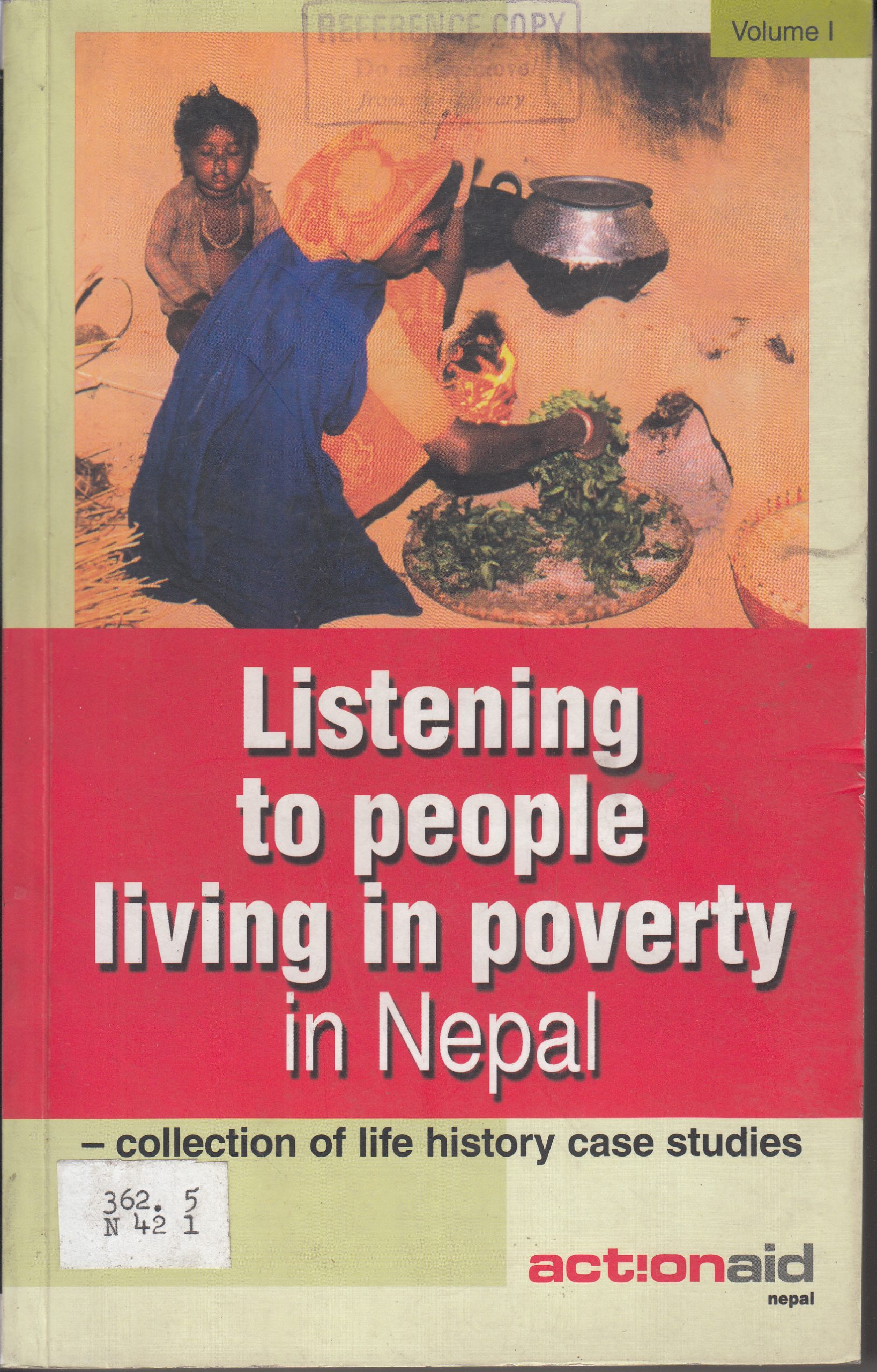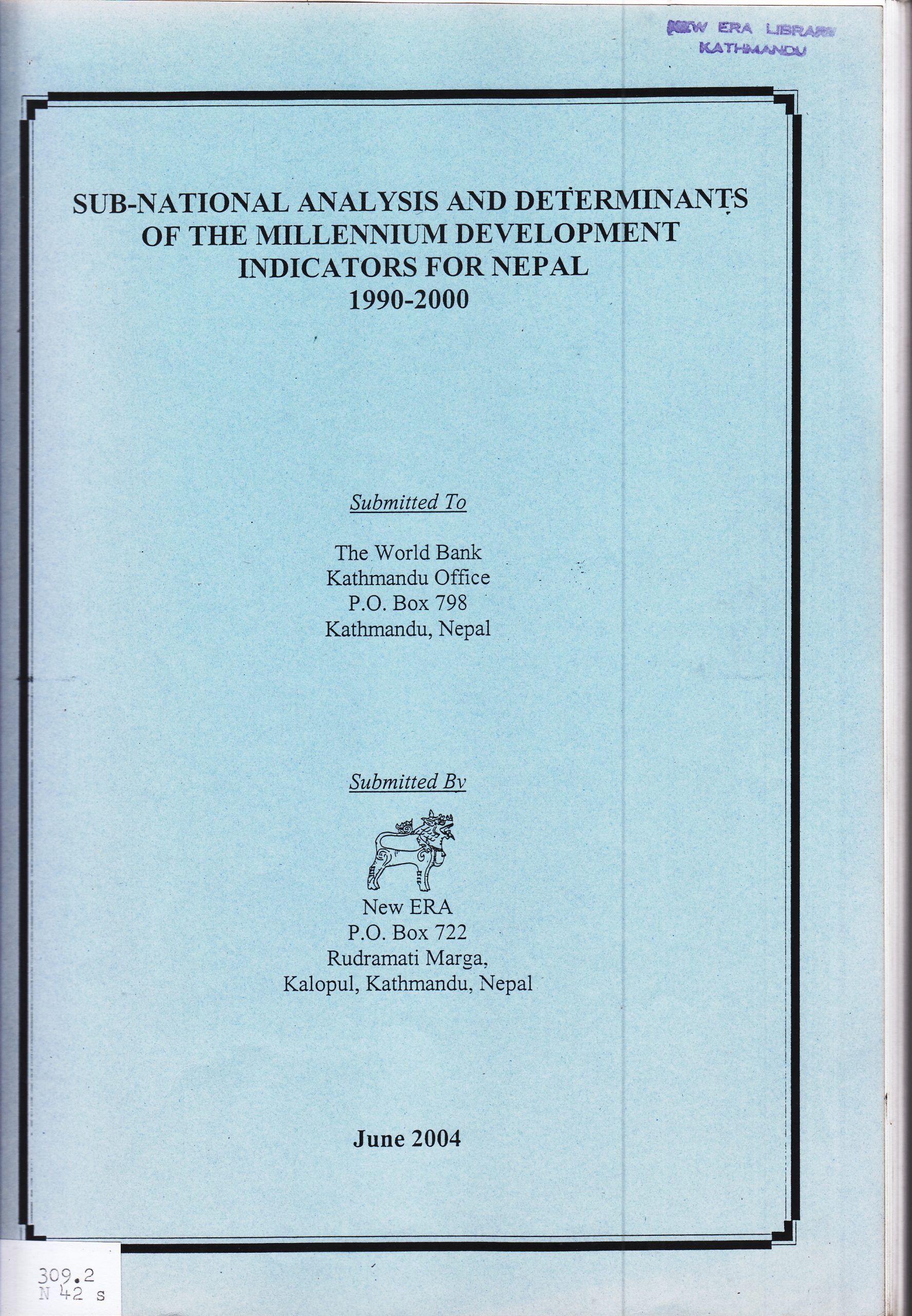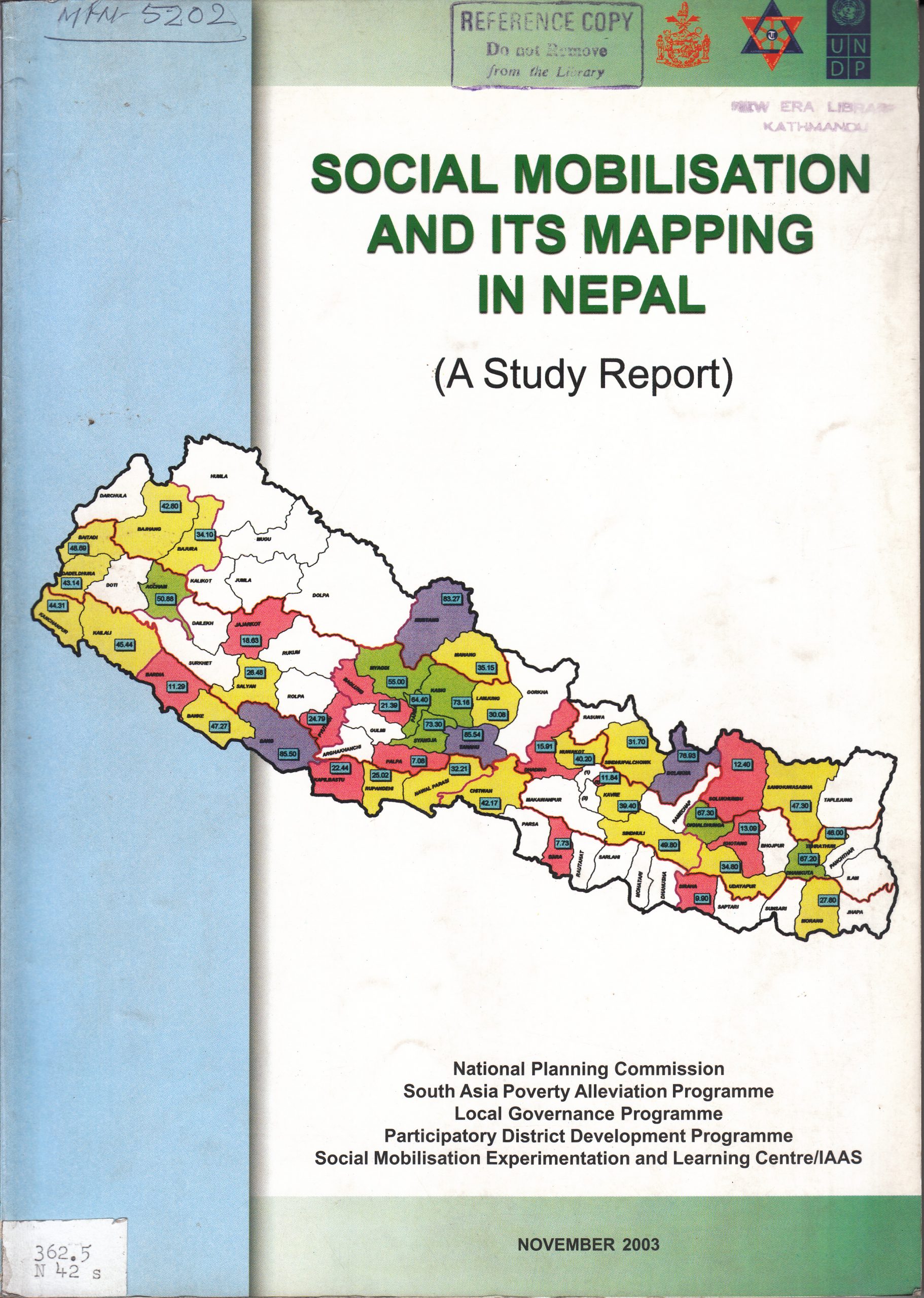The Feed the Future (FTF) program, led by USAID was implemented in 20 food insecure districts of western, mid-western and far-western regions, Nepal to reduce poverty, and under nutrition through accelerating growth of the agriculture sector by addressing the root causes of under nutrition and reducing gender inequality. This study was designed to determine significant change over time on key outcome and impact indicators by assessing agriculture productivity, daily per capita income, nutrition status, prevalence of poverty, resilience, women’s empowerment, dietary diversity, appropriate feeding practices, and hygienic environments improvement.
Report Type: Poverty
Child Poverty and Disparities in Nepal
This study upholds in achieving the Millennium Development Goals (MDGs) which mark an international commitment to eradicate extreme poverty and hunger and to foster global collaboration for development. As part of this effort, this study was carried out in 40 countries and seven regions in 2007-2008 with UNICEF support. The study proposes a comprehensive approach that focuses on poverty through a progressively specific analytical lens. First, the study looks at gaps and opportunities in national poverty reduction strategies, including the demographic and economic context, employment, public and private social expenditures, fiscal space and foreign aid. Second, the study focuses on the poverty and disadvantages faced by families with children – a crucial agenda to address.
A Review on CARE Nepal’s Activities on Urban Poverty Reduction in Nepal
Urban Development Project 2006-2008 was initiated CARE Nepal with objective to develop innovative ways of engaging and influencing on urban poverty reduction issues; increase knowledge base and strengthen skill and capacity of CARE Nepal staff and partners institutions; participate in deepening the understanding of urban poverty; and enhanced learning through the strategic agreement with regard to issues of women and youth. This study reviewed the strategies, experiences and activities of CARE Nepal under the project. The study had also recommended promoting vocational training components in their program to address the issues of unemployed, high school drop out youths and dependent family members of the squatter and slum communities.
Assessment of Poverty and Food Security in the Mid and Far-Western Regions of Nepal
Linking Local Initiatives to New Know-how (LLINK) – a new development approach of Helvetas/Nepal has started from 1997 in four districts namely Dailekh, Achham, Doti and Jajarkot of mid and far-west development regions of Nepal with aim to address the poverty and food in-sufficiency issues. This study was assesses the contribution of LLINK program in two districts out of four program districts to increase food security of Small farmers, landless,
Occupational and women (SLOW). The study learnt the multi dimensional impact of the program that the agricultural productivity increasing; livelihoods of the people have been improving through the sale of agricultural commodities; earnings from employment obtained after skills training; appraise the contribution of LLINK program
to reduce distress migration to the working communities
Report on Assessment of Protecting Livelihood in Crisis (PLIC) Programme
Protecting Livelihood in Crisis (PLIC) program was implemented by UNICEF and WFP in collaboration with DFID in nine districts of Mid-western and Far-western Development Region with aiming to improve the socio-economic situation of the people affected by conflict. This study was to assess the effectiveness of the program and the capacity of the NGO’s to implement it in conflict situations, so that it serves as a guide for future PLIC programs. The information was carried out from selected districts with parameters of nature of interventions, accessibility, ethnicity, and age of program.
A Baseline Study of Poverty Reduction Project Area in Doti District
CARE Nepal, in collaboration with local partner Samaj Sewa, implemented a poverty reduction project in Doti District to improve the social status of dalits, women and land-poor through greater inclusion and acceptance in society. This survey establishes baseline information about the target group using indicators such as socioeconomic status, educational status, and social and equity issues. The study also assesses the capacity of the selected partner organizations to undertake program activities.
Review of Women’s Reproductive Health Status and Poverty in Nepal
This study establishes an empirical basis for scaling up interventions to improve the reproductive health of women. The study gives an accurate picture of the reproductive health status and needs of women, particularly poor women, in Nepal; identifies district disparities in women’s reproductive health and their characteristics; determines the household and individual characteristics that affect poor women’s reproductive health; and demonstrates the links between poverty/inequality and women’s reproductive health status. The study includes a comprehensive and thorough review of available policy, plans and program documents.
Listening to the People Living in Poverty in Nepal
This study was conducted to understand poverty, marginalization, exclusion, deprivation and injustice faced by
the people living in poverty from their personal experiences. It collects their perceptions on the contribution of
government and non-government institutions in poverty reduction efforts. The research was carried out using
semi-structured interviews, focus group discussions and in-depth life history case studies in 20 VDCs of 10
sample districts
Sub-National Analysis and Determinants of the Millennium Development Indicators for Nepal 1990 – 2000
There are eight major Millennium Development Goals (MDGs): (i) eradicate poverty; (ii) achieve universal primary
education; (iii) promote gender equality and empower women; (iv) reduce child mortality; (v) improve maternal
health; (vi) combat HIV/AIDS, malaria and other diseases; (vii) ensure environmental sustainability; and (viii)
develop a global partnership for development. This study determines the status and progress of Nepal in
achieving the eight MDGs by looking at Millennium Development Indicators (MDIs). The study examines some
socio-economic indicators at the sub-national level and regional level for three points of time during 1990, 1995
and 2000.
Social Mobilization and Its Mapping of in Nepal – A Study Report
Social mobilization has a long history in Nepal but no commonly accepted definition existed and it was interpreted in different ways by different persons/agencies for their purposes. This study has attempted to build consensus on definition, modality, components and target achievement indicators of social mobilization. It explores the extent to which social mobilization was actually used as a major strategy for poverty reduction; prepares social mobilization maps showing the program areas of various agencies, program activities and coverage; and assesses the cost effectiveness and sustainability of different models of social mobilization.



